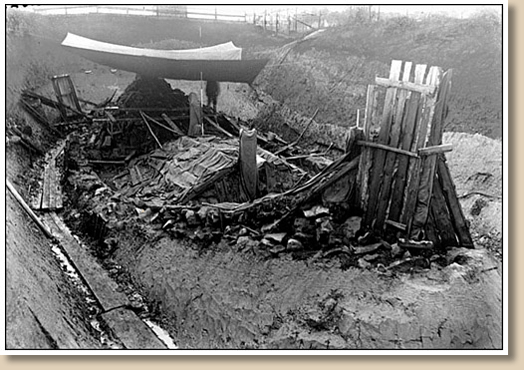Usually when asked to imagine what a Viking may have looked like, many people think of the strong male viking warrior, while the women in their society is confined to being servile and dutiful wives. This sentiment has continued throughout the years, even in a Time article in 2000, described them as meek house workers, reinforcing our view that theirs was a strictly male dominated society. (Lemonick et. al. 2000) However, studies about Gender in Viking societies completed as early as almost a century ago has shown that gender roles were not as clearly defined as preceding archaeologists and historians may have thought (O’Sullivan, 2016). Specifically, by looking at the graves for Viking age Scandinavians, and the objects found in associated with them, archeologists are able to discover new perspectives and ways of thinking about gender for these people which can help us in understanding modern day culture as well.
It has been found that stereotypically “feminine” designated items such as beads or brooches, that have been considered simple adornments based on our modern concepts of jewelry, are actually very helpful in learning about the Viking culture and helping to do away with previous notions that there was a conclusive division of male and female in Scandinavian society, and how these concepts carry over to modern day Scandinavian society (O’Sullivan, 2016). One such way this is supported is by finding beads in association with burials displaying otherwise “male” attributes or bodies determined to be biologically male. Examples of these male designated graves that have the presence of beads include findings from Norway, Dublin, England, and Iceland. In the cemetery at Ire on the Baltic island of Gotland, ten individuals that were determined to be male were buried with glass beads, and also were buried in association with weaponry (Fig. 2). Some male graves are also found without weapons but still with beads in their graves, which indicates that the inclusion of beads would not confirm nor negate the determination of a grave being named male (O’Sullivan).
In many female determined grave sited, oval or tortoise brooches, and box brooches were found, usually on the chest of the body or below the chin, meaning that they were likely affixed to a dress or used to keep a cape closed. These brooches also reflect the rank and status of the woman, as well as tasks they may have carried out in their lives (Jesch, 1991). These brooches could designate their positioning within social classes. In the Viking social hierarchy, there was three classes; upper, middle, and lower, all of which, women were able to be a part of, as well as had considerable social mobility (Larson, 2012). In fact, the Oseberg ship burial, one of the most famous burials that many do not realize was for a woman (Fig. 1). The remains of two women, one a slave, and the other likelely a noblewoman or völva, a religious shaman of the norse religion. Inside the ship, tapestries, a four wheeled cart, wood works, spades, and a staff were found. In the same area was the Gokstad Ship burial which held the remains of a Viking chieftain, showing that it was possible for women to hold a position as high as a male or higher with in the Viking culture (Larson, 2012).
By looking at the archeological remains of the Vikings and others like it we see that many times there is evidence for less strict divisions of gender, that gender was likely only one small part of what defined their place in culture and that it is important to question previously unchallenged and undisputed assumptions about cultures, both past and present.

Fig. 1 The Oseberg Viking Ship Burial (http://irisharchaeology.ie/2012/09/the-oseberg-viking-ship-burial/)

Fig 2. Beads typically found in male burials, these are specifically from those found in Cumwhitton Cemetery (https://cola.unh.edu/anthropology/women-traders-viking)
Further Reading:
https://www.ancient.eu/article/1251/women-in-the-viking-age/
References:
Jesch, Judith.
1991. Women in the Viking Age. Woodbridge, Suffolk: Boydell. https://www.jstor.org/stable/27710925?seq=1#metadata_info_tab_contents
2015. Strung Along: Re-evaluating Gendered Views of Viking-Age Beads, Medieval Archaeology,59:1, 73-86. https://www.tandfonline.com/doi/full/10.1080/00766097.2015.1119384
Larson, Caitlin.
2012. VIKING SOCIAL STRUCTURE AND GENDER ROLES IN SCANDINAVIA BASED ON BURIALS AND GRAVE GOODS. The Archaeological Studies Program Department of Sociology and Archaeology. https://core.ac.uk/download/pdf/10597635.pdf
Lemonick, Michael D., and Andrea Dorfman.
2000. “The Amazing Vikings.” Time. http://content.time.com/time/magazine/article/0,9171,44020,00.html


